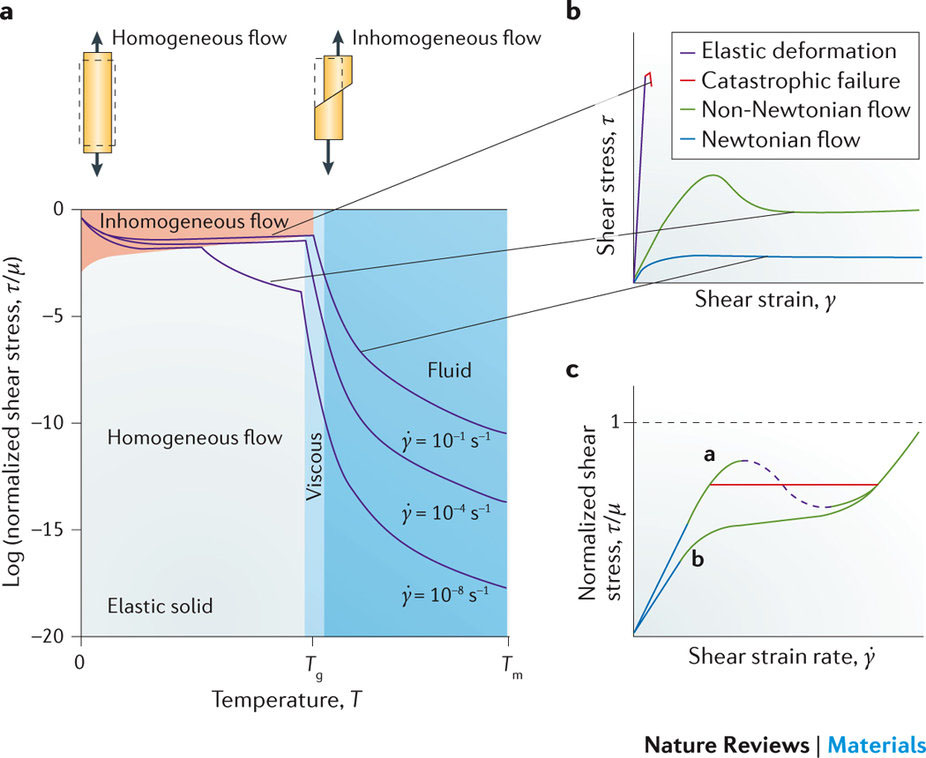Review Abstract
金属ガラスの熱機械的処理: ガラス状態領域を拡張する
Thermomechanical processing of metallic glasses: extending the range of the glassy state
2016年6月7日 Nature Reviews Materials 1 : 16039 doi: 10.1038/natrevmats.2016.39

多結晶金属については熱機械的処理の科学、技術、応用が確立されているが、ガラスについては確立されていない。金属ガラスは塑性変形するため、熱機械的処理がガラスの構造と特性に及ぼす影響を調べるユニークな機会をもたらす。冷却速度に応じて、液体からさまざまなガラス状態が形成され、冷却速度を遅くすることによって、エンタルピーと体積が低下した状態が得られる。そうした状態は、構造「緩和」を誘起するアニーリングによっても得られる可能性がある。照射や機械的変形などのプロセスによって、緩和の程度の減少、すなわち「若返り」が実現できる。本Reviewでは、熱機械的処理(すなわち、冷間・熱間加工、繰り返し荷重を含む弾性・塑性変形)によって誘起される緩和と若返りの程度について検討する。また、調査すべき問題、今後の進展の見通しについても論じる。
Corresponding Author
For crystalline metals, the science, technology and application of thermomechanical processing are established, but this is not true for glasses. Metallic glasses — because they can be plastically deformed — offer a unique opportunity to study the effects of thermomechanical treatments on the structure and properties of glasses. Depending on the rate of cooling, various glassy states can form from a liquid. Slower cooling gives states of lower enthalpy and smaller volume; such states might also be reached by annealing, which induces structural ‘relaxation’. A reduction in the degree of relaxation, or ‘rejuvenation’, is achievable through processes such as irradiation and mechanical deformation. In this Review, we explore the extent of relaxation and rejuvenation induced by thermomechanical processing (that is, elastic and plastic deformation, including cold and hot working, and cyclic loading). The issues that remain to be investigated and the prospects for further progress are discussed.

